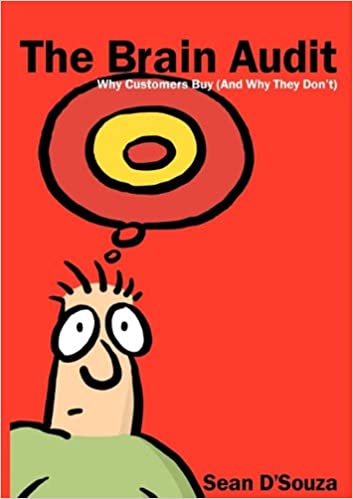This post is part of the 📖 The Brain Audit series.
Today I am reading a new chapter Bag 4: The Objections from the book The Brain Audit: Why Customers Buy (and Why They Don’t) written by Author, Sean D’Souza.
Do you often wonder what your customer is thinking? Don’t leave the thought process to chance and let that customer walk away. Your customers don’t want to walk away. They want to buy from you.
The Brain Audit shows you how the customer takes decisions. And what you need to put in place, so that the customer feels happy to buy products or services from you.
Yesterday, I started reading The Trigger chapter from the book The Brain Audit
From the introduction chapter, we read and understand that we need to know the 7 elements of why our customers buy from us or why they don’t. Here are the 7 things for you to recap.
- Bag No. 1: The Problem
- Bag No. 2: The Solution
- Bag No. 3: The Target Profile (The Trigger)
Bag No. 4: The Objections(still reading ‘The Objections’ part today)- Bag No. 5: The Testimonials
- Bag No. 6: The Risk Reversal
- Bag No. 7: The Uniqueness
So how do you defuse the objections?
You defuse the objections by being prepared. You need to list out every possible objection that a customer could possibly ask. And you list the answer to those specific objections. If a customer comes up with more objections than you have on your list, just add it to that list of objections.
In a face-to-face selling situation, a customer may have the ability to bring up the objections, and hey, you have the ability to give the answers—and hence defuse the objections.
However, if your customer is looking at your page online, you have no such luxury.
When you have a list of objections prepared, you can list those possible objections and then defuse them. And listing objections isn’t just a good practice online.
Objections and testimonials go hand in hand. They’re intrinsically linked to each other. Objections are one side of the coin. And testimonials are the other side.
Understanding the objections leads to an understanding of what kind of testimonials you need to have in your message.

Do you know you can listen to this book on Amazon Audible for FREE?
If you are not into reading like me, then you can listen to this book for FREE on Amazon Audible
Don't Read. Just 🎧Key Takeaways
- Creating a list of objections is important.
Summary
The Objection is a big signal that the customer is interested. Disinterested customers don’t object or ask questions. They simply walk away.
It’s when customers are interested, that they feel the risk, that they start asking questions and objecting.
It’s pretty important to defuse the objections. And you defuse objections by coming up with a simple, logical answer for the likely objection. Every objection can be easily answered, provided you’re prepared in advance.
Buy or not buy?
This book is excellent. Do not hesitate to pick this. Pick the physical book, so you take notes and highlight the bits you want to reference later. This book is such a kind of book where you need to pass it to the next generation.
Listen, I don’t care whether you buy the book using one of the links on the page or not but just buy. You will be glad for my recommendation.
Author(s): Sean D'Souza
Part 9 of 15 in the 📖 The Brain Audit book series.
Series Start | The Brain Audit: Why Customers Buy (and Why They Don't) - Day 8 | The Brain Audit: Why Customers Buy (and Why They Don't) - Day 10
